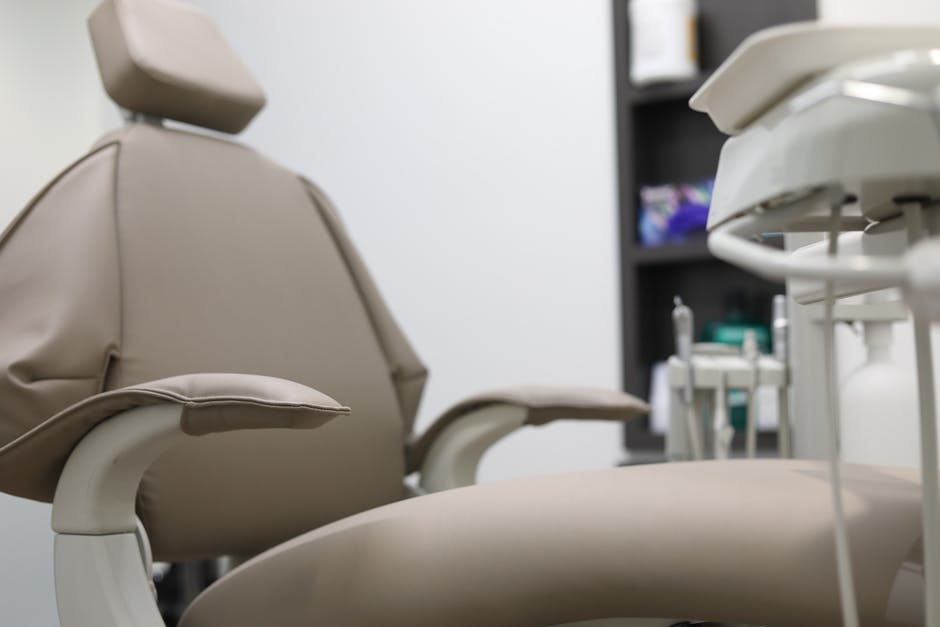Did you know that, according to the Canadian Dental Association, 75% of Canadians visit the dentist every year? Additionally, 86% of them visit the dentist at least once biannually. It’s also been reported that 80% of Canadians have dentists.
Whether or not you’re one of the many Canadians who have a dentist, you might be considering going to one because you suspect you have an abscessed tooth.
If you’ve been experiencing a large amount of pain with sensitive teeth and pain that worsens when you lie down, you know how frustrating it can be to have this type of tooth infection.
That’s why we’ve put together this article. In it, we’ll review the best way to treat abscessed teeth depending on your situation.
Finally, you can get relief from your abscess tooth. Read on to learn more.
What Is an Abscessed Tooth?
Before we review the best way to treat abscess teeth, we need to review what an abscessed tooth is, the different types, and the most common symptoms. That way, you can understand these mouth infections well enough to know which treatment is best for you.
An abscessed tooth is the result of a bacterial infection. When you suffer from it, a pocket of pus has formed in an area of your tooth. It’s also sometimes referred to as a dental abscess.
The amount of pain you experience when you have an abscessed tooth is between moderate and severe. It can get to the point where you feel pain not only in your tooth but also in your neck or ear.
If you don’t treat your abscessed tooth, you could end up with a life-threatening, serious condition.
Types of Dental Abscesses
Three dental abscess types are the most common. There are periapical abscesses, where the abscess is present at the tooth’s root’s tip. Then there are periodontal abscesses, where the abscess isn’t on the tooth’s root’s tip but on the gum next to it.
If you have a periodontal abscess, it can spread to the bone and tissue surrounding it.
Finally, there are gingival abscesses, which is when the abscess is present in your gums.
Symptoms
The main symptom of an abscessed tooth is throbbing pain in your gums or near your tooth. Usually, you feel the pain suddenly, after which it will get worse gradually. Additional symptoms include pain that reaches your neck, jaw, and ear, as well as:
- Pain worsening when you lie down
- Facial swelling and redness
- Pain when you bite or chew
- Tooth sensitivity
- Red, swollen gums
You might also experience bad breath, loose or discolored teeth, an unpleasant taste in your mouth, swollen or tender lymph nodes under your jaw or in your neck, and fever. If your dental abscess ruptures, the pain will go away almost immediately.
Additionally, you might taste the unpleasantly-tasting pus as the rupture occurs.
Abscessed Tooth Treatments
Because an abscessed tooth can lead to serious complications, you must get the treatment you need. Different treatments include a root canal procedure, draining the abscess, antibiotics, tooth extraction, and removing a foreign object.
Root Canal Procedure
When you get a root canal for an abscessed tooth, the dentist will drill into your tooth so they can drain the pus-filled abscess. Additionally, if there is any infected pulp, they’ll remove it. Once they’ve done this, they’ll fill your pulp chamber and seal it.
This part of your mouth is the part that holds the pulp. They’ll also fill the root canal and seal it.
Depending on the state of the tooth, your dentist might also have to complete a crown procedure, where they place a crown on your tooth to strengthen it.
This is usually a separate procedure that gets done during a different appointment than the one for the root canal procedure.
Draining the Abscess
Sometimes, treating your abscess is as simple as going in to see your dentist so they can drain it. They’ll place a small cut where the abscess is, after which they’ll use a saline solution to clean up the area.
Antibiotics
Sometimes, an abscessed tooth can cause your infection to travel to other parts of your body. When this happens, your immune system might be weak. Your doctor might provide you with a prescription for oral antibiotics so you can fight off the infection.
Tooth Extraction
If your tooth has become too damaged because of the abscess, your dentist might have to complete a tooth extraction procedure. Once the damaged tooth has been removed, they’ll drain the abscess, so the treatment is complete.
Removing a Foreign Object
Sometimes, your abscess might be caused by a foreign object that’s stuck in your gums. If this is the case, the dentist will remove the foreign object. Afterward, they’ll use a saline solution to clean up the area.
Home Treatments
Even though the actual treatment should be completed by a dentist, there are home treatments you can use to lessen your suffering while you wait to see a dentist. Remember that actual treatment is essential since the infection could spread and endanger your life.
Cold Compress
A cold compress is one of the best remedies for swelling and pain. To use it, put some ice cubes in a dry towel. Then, hold the ice-filled towel against the skin where you’re experiencing pain and swelling.
You can use this treatment for 15 minutes at a time and repeat it multiple times daily.
Saltwater Rinse
A great way to relieve your abscessed tooth pain before you wait to see a dentist is using a saltwater rinse. Added benefits include that you might start to heal or make your gums a bit healthier. To make a saltwater rinse, combine:
- ½ cup of warm water
- ½ teaspoon of table salt
Put the rinse in your mouth, swishing the mixture around your mouth for two minutes at least. Then, spit the rinse out. You can repeat this process, doing it a maximum of three times every day.
Oregano Essential Oil
Because it’s an antioxidant and antibiotic, oregano oil can be used to reduce the pain and swelling of your abscessed tooth. Remember that whenever you’re using an essential oil, you need to dilute it first with a carrier oil. Use this combination:
- 1 ounce of the carrier oil
- A few drops of the oregano essential oil
Once you’ve made the mix, put a few drops onto a cotton swab or ball. Then, press it against the abscessed area for between two and three minutes. Next, remove the applicator and allow the treatment to work on the area for 10 minutes.
Finally, rinse out your mouth. This is a treatment you can repeat a maximum of three times every day.
Baking Soda
Baking soda can be useful because it has antibacterial properties and can remove plaque in your mouth. It’s also an affordable option for temporarily treating your abscessed tooth since you might already have some baking soda in the kitchen cupboard. Combine:
- ½ cup of water
- 1 pinch of salt
- ½ tablespoon of baking soda
Then, put the mixture in your mouth and switch it around for a maximum of five minutes. Spit out what you’ve swished and keep repeating the same actions until you’ve used up all of the mixtures. You can repeat this treatment a maximum of twice daily.
Clove Essential Oil
One of the oldest remedies for toothaches, clove oil, might have anti-inflammatory and antibacterial properties. Like with oregano essential oil, you need to make sure you dilute it with the carrier oil. Use this combination:
- Between 3 and 5 drops of clove essential oil
- 1 ounce of the carrier oil
To apply it, put a few drops of this mixture onto a cotton swab or ball. Next, apply it to the affected area. Another option is to make a mouthwash with the clove oil by mixing a few drops of the clove essential oil into water (a small glassful).
The maximum amount you should use clove essential oil is three times daily.
Need Treatment Now?
Now that you know about the best way to treat an abscessed tooth, depending on your situation, you might find that you want treatment now. Maybe the pain is so great you’re suffering too much to wait, or you’re worried about the infection spreading.
Fortunately, we can help. At Taunton Village Dental, we’re experts when it comes to abscessed tooth treatments.
We can help you when you need it, providing dentist Oshawa services. To learn more about this service or other ways we can help you, contact us now.



